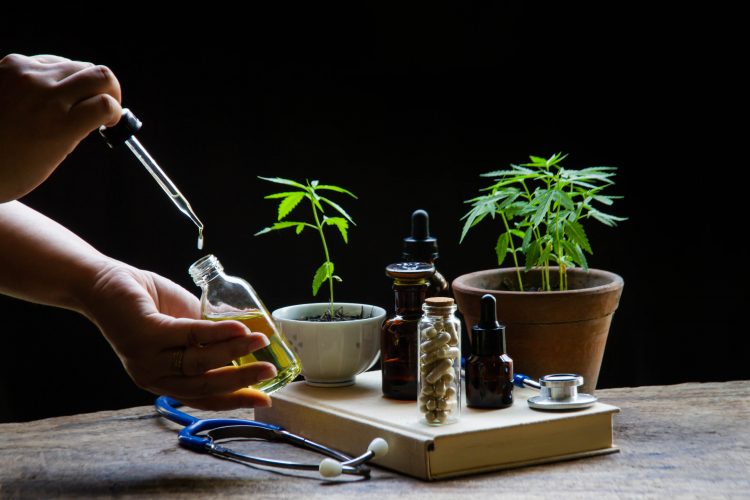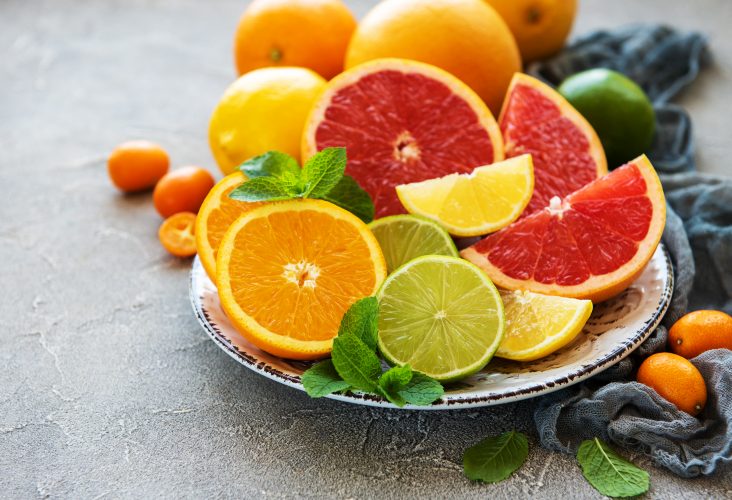Creating delicious-tasting cannabis products
- Like
- Digg
- Del
- Tumblr
- VKontakte
- Buffer
- Love This
- Odnoklassniki
- Meneame
- Blogger
- Amazon
- Yahoo Mail
- Gmail
- AOL
- Newsvine
- HackerNews
- Evernote
- MySpace
- Mail.ru
- Viadeo
- Line
- Comments
- Yummly
- SMS
- Viber
- Telegram
- Subscribe
- Skype
- Facebook Messenger
- Kakao
- LiveJournal
- Yammer
- Edgar
- Fintel
- Mix
- Instapaper
- Copy Link
Posted: 25 May 2022 | Joshua Minchin (New Food) | No comments yet
Does THC have a flavour and how do cannabis food and beverage manufacturers choose which flavours to use? Jay Denniston provides the answers to these questions and many more in an insightful interview with Joshua Minchin.


Amid all the discussion around legislation, manufacturing difficulties and even product claims, it is easy to forget that an awful lot of science and hard work goes into making cannabis-infused food and beverage products taste good. New Food’s Joshua Minchin spoke with Jay Denniston, Chief Scientist at BellRock Brands, owner of famous US cannabis-beverage firm Dixie Elixirs, to learn more about flavour within the cannabis food and beverage space.
Q: First thing’s first Jay, does THC have a flavour?
Jay Denniston (JD): In terms of a flavour per se, I would say THC has very little if any flavour. But if we’re talking about a flavour perception, then I would say it elicits bitterness.
Most of the flavour from THC oil comes from the other constituents of the oil. For example, if you have an oil that’s 90 percent THC, then you’ve got 10 percent of other stuff in there! Most of the flavour comes from that 10 percent of other ‘stuff’. THC delivers that physical sensation of bitterness and stringency, but the flavour that people will describe as earthy, grassy or nutty, originates from those other compounds, which can include things like chlorophyll [a green pigment found in plants].
A lot of extracts contain traces of chlorophyll and that’s what gives them that green colour. I’ve never tried 100 percent pure THC – it’s actually very, very difficult to make in the laboratory because of its chemical properties.
Q: Do you work with those aforementioned flavours, or try to mask them in your products?
JD: At Dixie Elixirs, we generally mask those flavours in our products. That’s because we are a recreational brand and we are aiming for mainstream appeal. We use trending flavours that people are familiar with. We’re not going for the ultra canna-connoisseur with Dixie Elixir products (we have others in our portfolio aimed at those consumers).
We mask with big flavours, such as root beer, but we also use fruit flavours such as berry lemonade, cherry limeade, and fruit punch. Citrus is actually one of the most well-known cannabis ‘maskers’ and as a result, we use a lot of citrus. We add a little bit of lemon to our flavour profiles because lemon hits the consumer up front – , which does help mask that downstream bitterness flavour.
Sugar is also really important in masking bitterness. A really big decision for edibles manufacturers to take is whether to add sugar or not, because if you’re going to add sugar, It’ll take a considerable amount.
When it comes to masking and creating new flavours, there are two routes one can take – manufacturers can use flavour maskers or flavour modifiers. Flavour modifiers are additives that can actually depress flavour profiles. They act on your tongue, as opposed to flavour maskers will just help to round out a flavour.
Vanilla is often used in modification because it is a very balanced, round flavour, and it helps take off a lot of the sharpness and the bitterness. We use flavour modifiers, maskers and flavourings (plus different ratios of sugar) in our masking processes.


Citrus can be a particularly useful flavour if you want to mask an ingredient
Q: How difficult is it to create great-tasting edibles whilst adhering to product claims?
JD: Let’s take one of our other brands, Rebel Coast. Aside from wine, we also produce seltzers in four different flavours. Under that product range, the decision was taken to proceed without sugar, making the range zero sugar, zero carb and zero calories. Now, you’ve just upped the ante a lot because those product claims limit my product development toolbox. If I’m going to use sweetness to mask flavour for example, I can’t use sugars, sucrose, fructose, galactose or maltose.
For example, if it’s a 5mg beverage versus a 10mg beverage, you have to add more masker on the five and more sweetener on the 10 to try to balance that flavour. It’s a difficult task!
Other aspects of the product can also make things tricky. For example, you might want a vegan gummy…but most gummies are made with gelatine. So we need a vegan gelatine alternative – how do we do this? There is a fish-based gelatine, of course that is not vegan, it’s pescatarian, but even that is very expensive and prevents us from using it to create a pescatarian suitable product.
This just demonstrates that as a product formulator, I have to know about all the available options. Every now and again, I get put into a really tight corner and I better have everything in my toolbox! I need all of my additives, modifiers, stabilisers and preservatives to fulfil product claims that we make.
Q: How do you decide which flavours to use?
JD: Seven years ago when I arrived at Dixie Elixirs, I got in touch with a lot of the different major flavour companies. I chose one based in San Diego and I got two of their representatives to fly down here [to Denver] and stand with us in the laboratory.
Thanks to regulations we could not undertake infused testing, but we did do uninfused flavour testing for eight hours a day for one week. Through extensive sales data from that flavour manufacturer, we were able to ascertain trending flavours across the board for different geographical areas and different demographics, eg millennials versus Generation X.
So we did not just limit our scope to cannabis products – that’s the opposite of what I want. I want to bring in all the consumers that go down to Whole Foods or to Sprouts and those trending flavours you can find there.
Hibiscus is a good example – it’s huge right now, as is elderberry, hence why we have a lemon elderberry gummy.
I really rely on our flavour companies – I’m in touch with them every week, and every week we’re carrying out flavour reviews and asking what the new innovative flavour is. What’s the market like in Colorado, what’s the market like in the United States etc.
I want THC to be seen simply as an ingredient that you get in some products at the grocery store. I don’t just want [our products] to be sold in dispensaries alone for the rest of the time. On a quality basis, I want a consumer to pick up one of our products from a dispensary and pick up a product from a grocery store and they’re the same quality.
We’re not going to shift that black market perception without bringing ourselves up to quality standards. We can’t do brownies forever!
Biography
Jay Denniston joined Dixie Elixirs in early 2015 as the Director of Science to combine his analytical, toxicological, environmental, food production, quality control, and biochemistry knowledge. Jay leads a team of scientists to develop cannabis infused products across a wide spectrum of traditional CPG product categories, including beverages, confections, snack foods, nutritional powders, tablets, topicals, and pet products.
He has over a decade of experience in the cannabis industry. He joined the industry in 2010 to promote scientific principles and techniques to grow and improve the industry.
Denniston holds a B.S. in Biochemistry from the University of Texas at Austin, his hometown. He gained initial experience in environmental laboratories, testing water and fish tissue for insecticides and pesticides.
Related topics
Beverages, CBD hemp & cannabis, Flavours & colours, Ingredients, New product development (NPD), retail









